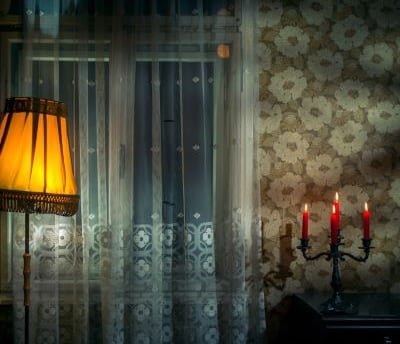New Orleans City & Cemetery Bus Tours: Uncover the Heart and History of the Big Easy
The design of these cemetery structures often ranges from simple vaults to elaborate mausoleums, showcasing the craftsmanship of past eras. Notable examples include the famous St. Louis Cemetery No. 1, where visitors can find the final resting place of the legendary Voodoo priestess Marie Laveau, a figure emblematic of New Orleans' mystical past. The ornate designs and inscriptions on tombs reveal the stories and traditions of families who sought to honor their loved ones within this unique landscape.
UNITED STATESLOUISIANABUS TOURS
1/10/20255 min read
DISCLOSURE:
There may be affiliate links on this post. If you buy something using these links i may receive a small commission at zero cost to you.
A Journey Through Time: Exploring New Orleans' Historic Neighborhoods
New Orleans is a city steeped in history, where every corner tells a story. Its historic neighborhoods are not merely areas on a map; they are vibrant tapestries woven with tales of resilience, culture, and creativity. The charm of Treme, often regarded as one of the oldest African American neighborhoods in the United States, is an essential stop for anyone wishing to delve deep into the city’s roots. Visitors can explore the rich musical heritage that resonates through its streets, as well as the significant landmarks like the historic Kermit's Treme Mother-in-Law Lounge, which has been a cornerstone of the local jazz scene.
Moving from the rhythm of Treme, one finds oneself in the picturesque Garden District. Renowned for its stunning antebellum mansions, this area stands as a testament to the grandeur of New Orleans' past. The architecture here showcases a variety of styles, from Greek Revival to Italianate, each house telling its own story. Notable stops include Lafayette Cemetery No. 1, where visitors can uncover the unique above-ground burial practices that reflect the city's cultural heritage.
As one journeys through these neighborhoods, the unique characteristics of each area shine through. The French Quarter, with its lively atmosphere and historic buildings, captivates tourists with landmarks like Jackson Square and St. Louis Cathedral, highlighting the city’s vibrant spirit. Meanwhile, Marigny offers a more bohemian vibe, recognized for its colorful Creole cottages and local music scene, particularly on Frenchmen Street.
These historic neighborhoods not only provide insights into New Orleans' architectural beauty but also offer a cultural experience that is unparalleled. The narratives, architecture, and community life woven into the fabric of each area contribute significantly to the allure of the Big Easy, making them essential visits for those eager to understand the heart and history of this remarkable city.
Cities of the Dead: An Up-Close Look at New Orleans Cemeteries
The cemeteries of New Orleans, often referred to as 'Cities of the Dead,' offer a strikingly unique perspective on the city's cultural identity and historical heritage. The above-ground burial practices, necessitated by the region's high water table, provide a distinctive aesthetic that differentiates New Orleans cemeteries from those found elsewhere in the United States. Each tomb, built in various architectural styles, reflects the diversity and complexity of the city's rich history.
The design of these cemetery structures often ranges from simple vaults to elaborate mausoleums, showcasing the craftsmanship of past eras. Notable examples include the famous St. Louis Cemetery No. 1, where visitors can find the final resting place of the legendary Voodoo priestess Marie Laveau, a figure emblematic of New Orleans' mystical past. The ornate designs and inscriptions on tombs reveal the stories and traditions of families who sought to honor their loved ones within this unique landscape.
The burial rituals in New Orleans also contribute to the city's distinct cultural tapestry. Rather than earth burials, families inter their deceased in these above-ground crypts, often adorned with personal mementos and flowers. The tradition of using grave offerings speaks to the enduring bond between the living and the deceased, illustrating how cultural practices adapt to suit environmental conditions.
Additionally, many cemeteries in New Orleans serve as public parks and gathering places, allowing for artistic expression, community events, and contemplative walks among the tombs. This melding of reverence and recreation attests to the vital role that these 'Cities of the Dead' play in the vibrant life of New Orleans, ensuring that even in death, the stories of the past are interwoven with the living narrative of the city.
Discovering the Great Outdoors: Exploring New Orleans' Scenic Parks
New Orleans is renowned for its vibrant culture and rich history, but it also offers an abundance of natural beauty in the form of its scenic parks. One of the largest and most picturesque parks in America, City Park, spans over 1,300 acres and serves as a vital green space within the bustling urban environment. Here, visitors can immerse themselves in a serene landscape that features ancient live oaks, Spanish moss, and a diverse range of flora and fauna.
City Park is not just a place to enjoy nature but also a community hub that fosters recreation and social interaction. It provides numerous opportunities for outdoor activities such as jogging, walking, and cycling along its well-maintained trails. Families can take advantage of the spacious picnic areas, where gatherings can take place amidst the idyllic surroundings. There are various playgrounds for children and beautifully landscaped gardens that enhance the park's natural beauty.
Visitors to City Park can also explore several attractions, including the New Orleans Museum of Art, which showcases an impressive collection of artworks and hosts seasonal exhibitions. The park features the stunning Couturie Forest, which allows guests to feel as though they’ve escaped the city entirely. Moreover, the enchanting botanical gardens capture the essence of the region’s horticultural diversity and provide a peaceful retreat just minutes away from the city's lively streets.
In stark contrast to the urban landscape of New Orleans, the lush green spaces of City Park underscore the importance of balancing recreational offerings with cultural experiences. This connection to nature not only enhances the quality of life for residents but also invites visitors to enjoy a moment of tranquility within the vibrant atmosphere of the Big Easy. City Park is an essential part of the New Orleans experience, providing a delightful escape into nature that complements the city's historical sites.
Savoring the Local Flavor: Culinary Highlights and Hidden Gems
New Orleans is not only a city rich in history and culture but also a culinary paradise where visitors can indulge in a vibrant food scene. The culinary offerings here are marked by an eclectic mix of flavors influenced by Creole, Cajun, and African culinary traditions, which makes every bite a reflection of the city’s identity. During New Orleans bus tours, travelers are introduced to iconic dishes such as gumbo, jambalaya, and crawfish, which evoke the essence of the locality. Each of these dishes tells a story, often tied to the city’s diverse heritage, thereby enriching the overall tour experience.
Local guides are invaluable, providing insights into where to find the best culinary delights. They recommend eateries off the beaten path that serve authentic versions of beloved dishes. For instance, spots like Cochon offer artisanal takes on Southern cooking, while local food stalls often provide a more casual but equally enticing alternative. Hidden gems are abundant, with food trucks and family-run establishments frequently dishing out unique interpretations of Louisiana cuisine.
In addition, no visit would be complete without sampling the city’s legendary beignets or sipping café au lait at a local café. The city’s bar scene also deserves special mention, with many establishments offering the coldest beers and classic cocktails, such as the iconic Sazerac. These local beverages perfectly complement the culinary offerings, allowing visitors to enjoy a full sensory experience.
The importance of food culture in New Orleans cannot be overstated; it is an integral part of the city's allure and an unforgettable element of the tours. Guests leave with not only a deeper understanding of New Orleans history but also a full stomach and a longing to revisit the flavors that define the Big Easy.
Alternative City & Cemetery Tours:
Other New Orleans Bus Tours:
Summary:
Convenient hotel pickup and drop-off (from selected locations)
2 to 2.5-hour guided bus tour exploring the city’s highlights
Guided visit to a historic above-ground cemetery
Includes:
2-hour guided bus tour through New Orleans
Led by a professional local guide with expert insights
Stops at 2–3 historic cemeteries, including above-ground tombs
Use of EMF readers for an interactive paranormal experience
Exclusive access to a secret society cemetery for a unique and mysterious exploration







